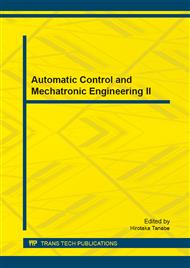p.367
p.371
p.377
p.381
p.385
p.389
p.396
p.402
p.409
The Submarine Rescue Command Simulation Training Information System Based on the HLA
Abstract:
It is the key point which establishes a new rescue system for guarantee Chinese naval submarine operational capability. As new rescue vessel and various rescue equipment put into use in succession, and company with the military academies training reform, the author puts forward the construction of the new submarine rescue command simulation training information system based on the HLA(High Level Architecture) in this paper. It introduces the system construction situation, including system functions, constitutes and working principle, and analyses the key technology point. It is also given a virtual scene of submarine rescue command operation based on data driven.
Info:
Periodical:
Pages:
385-388
Citation:
Online since:
September 2013
Keywords:
Price:
Сopyright:
© 2013 Trans Tech Publications Ltd. All Rights Reserved
Share:
Citation:


